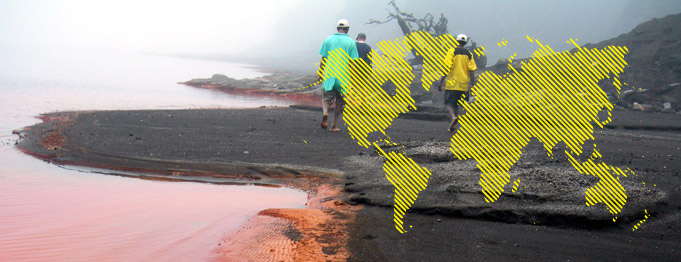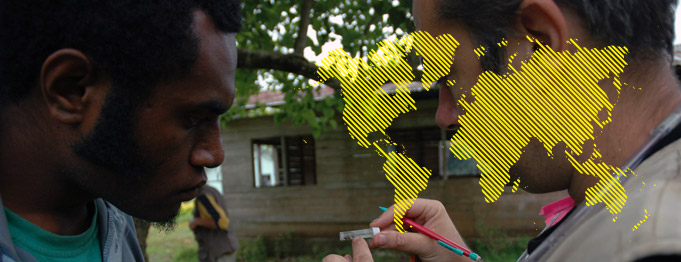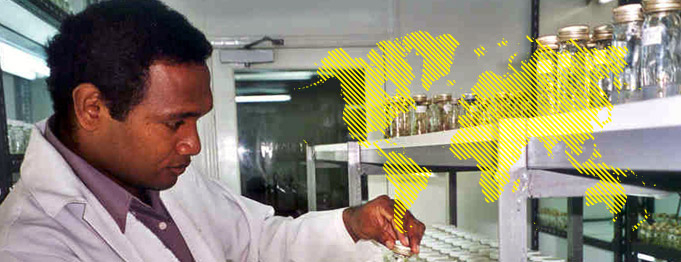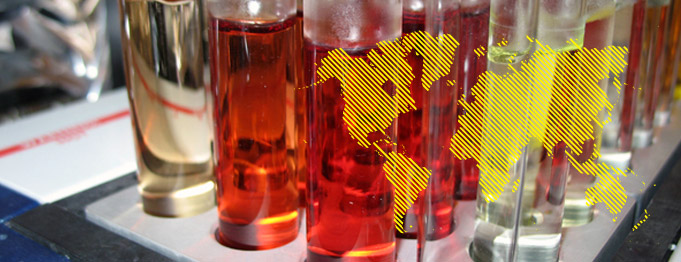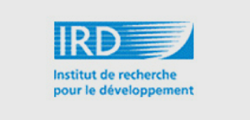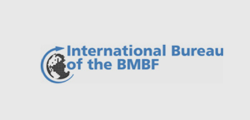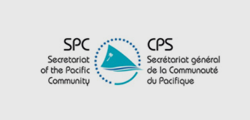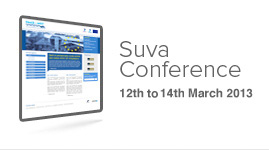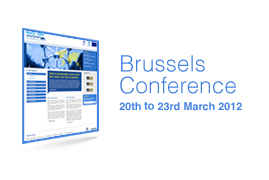Competition between local and industrial fishers heats up in Pacific (SPC media release, 8th July 2013)
Increased competition for tuna is causing tension between local fishers and industrial vessels in some Pacific Islands, and the Heads of Pacific Island Fisheries Departments have tasked the Secretariat of the Pacific Community (SPC) to examine the issue.
The problem occurs when industrial vessels compete with small-scale local fisheries (‘artisanal fisheries’) for the same fish, in the same area and during the same season. It is worse in areas where the industrial catch is large.
Dr Shelton Harley, head of the Oceanic Fisheries Programme’s Stock Assessment and Modelling group at SPC, says three recent changes have the potential to cause the current concerns. One of these changes is an increase in fishing activity.
‘There are now fewer fish in the water to catch,’ he says. ‘In addition, more fish are being taken than ever before by the industrial fleet, and more of the industrial catch is being taken closer to artisanal fishing grounds.’
‘Taken together, these three factors can bring industrial fishing operations directly into competition with artisanal operations.
’ In tropical waters, competition is for skipjack and yellowfin tuna. Increasing use of fish aggregating devices (FADs) means industrial vessels are accidentally catching more of the other species important to artisanal fisheries, such as mahi mahi, wahoo and rainbow runner.
In subtropical areas, industrial longline vessels target albacore tuna, but take as bycatch fish such as yellowfin and wahoo that are also important to local fishers.
Dr Harley says a balance has to be found between the interests of industrial and artisanal fisheries, and he suggests a number of solutions.
These include the establishment of industrial fishing exclusion zones, the installation of nearshore FADs to make fish more accessible to artisanal fishers, and improving our understanding of the activities of small-scale fisheries.
SPC will work individually with Pacific nations to identify the extent of the problem and the changes they can make to resolve these issues. Dr Harley says that SPC will also work with regional organisations on possible management actions.
Deirdre Brogan, a Fisheries Monitoring Supervisor with SPC, says scientists don’t fully understand how fishers who usually fish close to shore will be affected, and need more information on them.
‘Fishers are more vocal when they see large vessels on the horizon, or when their own catches are low, but these can be temporary or seasonal variations. Other unrelated factors may affect their catch,’ she says.
SPC has published a new policy brief to alert Pacific Island nations to the problem and explain how it can help find possible solutions: http://www.spc.int/DigitalLibrary/Doc/FAME/Brochures/Anon13_PolicyBrief22_Artisanal_Industrial.pdf
Dr Harley says that despite the shortages artisanal fishers may be feeling, scientists’ estimates show that fish stocks are still at ‘biologically healthy’ levels.
For interview: Dr Shelton Harley +687 26 01 92, sheltonh@spc.int
For information and photos of industrial/artisanal fisheries: Anne Lefeuvre +687 26 01 93, annel@spc.int
For media assistance: Jenni Metcalfe +61 408 551 866, jenni@econnect.com.au


